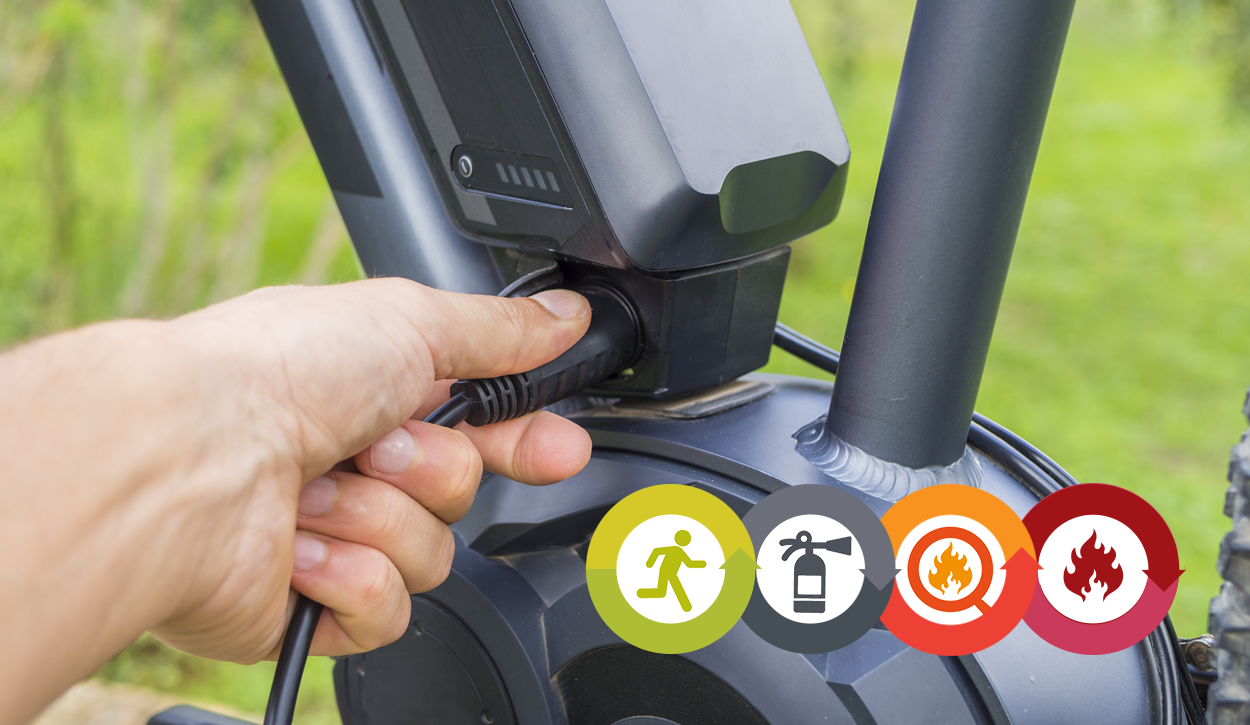Surge In Electric Bike Popularity Raises Fire Hazards Concerns
The expanding market for electric bikes, scooters, and mopeds presents a positive trend in reducing carbon emissions, as studies indicate their low carbon footprint. However, this growth also brings attention to the electrical safety risks associated with electric two-wheelers. In countries like China, a hub for e-bikes, and cities such as London, where e-bikes gained popularity later, there’s a noticeable increase in fires caused by e-bikes and e-scooters.

Aviva, an insurer, has observed an increase in customer claims related to fires caused by rechargeable e-bikes exploding during charging, including incidents involving faulty e-bike batteries and second-hand purchases, notes Hannah Davidson, a senior underwriting manager for Aviva. A survey conducted by Aviva reveals that 71% of adults in the UK are unaware of the signs indicating that a lithium-ion battery, commonly found in e-bikes and e-scooters, is close to failing. These warning signs include heating, leaking, swelling, and unusual smells and noises.
The rapid rise of e-bikes has outpaced regulations. For example, the UK lacks regulations concerning e-bike chargers or kits to convert standard bikes into electric ones. Additionally, an underground international market for e-bike parts thrives online in many places. Thermal runaway, a chain reaction where a cell inside a lithium-ion battery overheats, poses a new risk factor in fire risk assessment for the usage, location, storage, and charging of e-bikes in both commercial and domestic settings.
The London Fire Brigade advises riders to allow their batteries to cool down before recharging, charge on flat hard surfaces, avoid extreme temperatures, and ensure fire alarms are in good condition. Aviva urges consumers to remain vigilant, noting a seven percent increase in customer claims over the past year for fires caused by lithium-ion batteries, commonly found in rechargeable devices like mobile phones, tablets, power tools, e-bikes, and e-scooters.
This trend is further supported by additional research commissioned by Aviva, revealing that one in nine Brits have experienced a fire (11%) or explosion (11%) in their home due to a lithium-ion battery or device. Nearly one in ten (9%) have encountered scorching of a surface where a lithium-ion battery or device was charging, and two in ten (20%) have had a battery or device overheat.
If your commercial location has seen an increase in e-bike usage it will require analysis in regards to fire risk assessment. SS Systems are ideally placed to work with you to implement a complete fire safety review encompassing all aspects relating to risks within your business. Some of the elements we would cover include:
Fire Extinguishers
You are legally responsible to ensure there are enough fire extinguishers on your premises. In addition to ensuring that you comply with the laws relevant to your industry and the size of your site. A risk assessment will provide how many fire extinguishers and ancillary products are required to protect your site.
Fire Safety Training
Fire safety is a fundamental part of any business and training is the cornerstone of implementing any fire safety policy. Legislation via the Regulatory Reform (Fire Safety) Order 2005 requires employers to provide training for all employees in actions to be taken in the event of a fire.
Emergency Lighting
Emergency lighting is part of a building’s fire safety provision and is a requirement of The Regulatory Reform Order of 2005. In the event of the mains power lighting failing or a power cut, emergency lighting can save lives by aiding in the safe evacuation of people within the building.
#FireAlarms #FireRiskAssessment #FireSafetyEquipment #FireAlarmMaintenance #AccessControl

